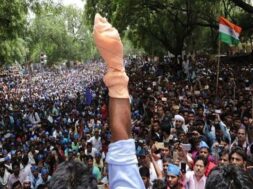
Over four decades on, the Marichjhapi massacre needs more attention
In India’s history, Dalits have frequently been at the receiving end of violent massacres. The Marichjhapi massacre under the Jyoti Basu-led Left Front government is a prime example that doesn’t get media attention and is left out of mainstream discussion.
As per Deep Halder — author of Blood Island: An Oral History of the Marichjhapi Massacre — 1,700 Dalits were killed on January 31, 1979. While different accounts give different numbers, all agree that this was a methodically planned massacre. So much so that any media report related to the massacre was censored by the erstwhile state government under the Left in West Bengal.
Forty-four years on, remembering Marichjhapi and the role of the Left Front government in the violence is essential. Today there are calls for Britain to apologise for the Jallianwala Bagh massacre, which they rightly should. But what about those who showed no mercy in eliminating their Dalit brethren? About 40,000 Hindu refugees moved to Marichjhapi — a small island in the Sundarbans in West Bengal — thinking that they would be safely honoured and welcomed by the erstwhile state government. Halder’s book lays down the devastating conditions of the Dalits. Here is an excerpt that describes the violence: “Sarkar would only gain consciousness after the leg was gone. He would spend a month and thirteen days recuperating, between pain and sleep, between depths of despair and yearning for Marichjhapi. He would know later that CPM cadres had landed in Marichjhapi that day, fired at, killed and raped islanders and looted their belongings. The mayhem continued for the whole day”.
More than 1500 Dalits were massacred in a state sponsored violence led by the Left wing government in West Bengal.
Over four decades on, the Marichjhapi massacre needs more attention.
My article for @IndianExpress https://t.co/XnMpDJGVOb
— Dr. Guru Prakash Paswan (@IGuruPrakash) February 24, 2023
The planning for the massacre by the West Bengal administration leaves me numb. Journalist Sukharanjan Sengupta described the events preceding the action on the fateful night of January 31: “On 26th January 1979, the police surrounded Marichjhapi in almost 100 motor-boats and riverboats…The purpose was to prevent the supply of food, drinking water and medicines to the island along the waterways”.
Economic blockade, violence of unimaginable proportions and media censorship embodies the contours of the Marichjhapi massacre. In his famous speech “Buddha or Karl Marx”, B R Ambedkar had highlighted that one facet of communism is violence. Ambedkar did not come to this inference from an Indian standpoint alone. Take the case globally, be it the Bolshevik Revolution or the Chinese Cultural Revolution. The Left in India, with such foreign templates, is a failed political and ideological experiment, to say the least.
The victims of the Marichjhapi massacre hailed from the Namasudra community. In the run-up to the Constituent Assembly elections, this community was largely responsible for Ambedkar getting elected from the Bengal province — thanks to Jogendra Nath Mandal, who is virtually forgotten in the landscape of Indian history. He has been profiled in the book I co-authored with Sudarshan Ramabadran, Makers of Modern Dalit History.
Earlier, the concerns of the Dalits were of the utmost importance but today, representation is more critical. The central government has been inclusive in giving Dalits and Tribals party positions and positions in key decision-making bodies. However, it took the CPM until 2022 to appoint one member from the Dalit community to its politburo, Dr Ram Chandra Dome. As they say, history is the best judge.
(Guru Prakash)
The writer is national spokesperson, BJP













